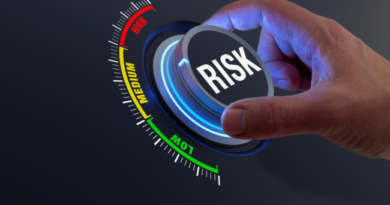Understanding ISO 31000: The Global Risk Management Standard
Introduction
Every organization, whether global enterprise or local business, faces some level of risk. How that risk is managed defines its ability to grow, innovate, and survive disruption. Enter ISO 31000—a globally acknowledged standard that provides the structure, process, and principles necessary for world-class risk management.
This article walks you through what ISO 31000 is, why it matters, and how to apply it to build smarter, more resilient business practices.
What Is ISO 31000?
ISO 31000 is a risk management guideline developed by the International Organization for Standardization (ISO). First released in 2009 and revised in 2018, it is not a certification standard but a universal framework that organizations of any size or type can use to manage risk more effectively.
ISO 31000 helps align risk management with:
- Decision-making
- Strategy and operations
- Compliance and performance goals
Its strength lies in flexibility—you can tailor it to fit your organization’s context, culture, and complexity.
Who Should Use ISO 31000?
ISO 31000 is ideal for:
- Enterprises wanting to align risk with corporate governance
- Project managers needing structured risk handling
- Risk officers seeking consistency across departments
- Public sector organizations aiming for transparency and efficiency
Its principles are applicable across all industries, from finance to manufacturing to healthcare and education.
Key Benefits of ISO 31000
Organizations that adopt ISO 31000 often experience:
- Improved decision-making under uncertainty
- Enhanced stakeholder trust
- Greater operational resilience
- Regulatory preparedness
- Cost savings through reduced incidents and better planning
Ultimately, it shifts organizations from a reactive mindset to a proactive, opportunity-seeking one.
The Core Principles of ISO 31000
ISO 31000 is built on eight core principles that define effective risk management:
1. Integration – Risk should be embedded into all aspects of the organization.
2. Structure and Comprehensiveness – Ensures consistency and comparability.
3. Customization – Tailor the framework to the organization’s context.
4. Inclusiveness – Involve all stakeholders in the process.
5. Dynamic Nature – Continually adapt to changing internal and external contexts.
6. Use of Best Available Information – Decisions should rely on accurate, relevant data.
7. Human and Cultural Factors – Recognize behavioral and organizational influences.
8. Continual Improvement – Refine processes through learning and review.
These principles are not just checklists—they shape the culture and mindset of risk within the organization.
ISO 31000: Framework vs Process
ISO 31000 is structured into two main parts:
1. The Framework
The framework ensures that risk management is supported at all levels. It includes:
- Leadership and commitment
- Integration into organizational processes
- Clear roles and responsibilities
- Allocation of resources
- Monitoring and continuous improvement
2. The Process
The process outlines how risk is managed in practice. It includes:
- Communication and Consultation: Keep stakeholders informed.
- Scope, Context, and Criteria: Set the parameters for risk evaluation.
- Risk Identification: Determine what might happen and why.
- Risk Analysis: Understand causes, impacts, and likelihood.
- Risk Evaluation: Decide which risks need attention.
- Risk Treatment: Choose actions to mitigate or accept risks.
- Monitoring and Review: Track performance and change.
- Recording and Reporting: Maintain transparency and accountability.
Together, the framework and process ensure that risk is addressed consistently and effectively across the organization.
How ISO 31000 Differs from Other Standards
Unlike many ISO standards, ISO 31000:
- Is non-certifiable (it provides guidance, not requirements)
- Emphasizes strategy alignment
- Supports rather than replaces sector-specific standards (like ISO 27001 or ISO 9001)
For example:
- ISO 27001 focuses on information security.
- ISO 9001 addresses quality management.
- ISO 31000 provides a foundation that complements both by handling overall risk.
Implementing ISO 31000: A Practical Guide
1. Build Awareness and Support
Educate leadership on the benefits and align with existing values.
2. Perform a Risk Maturity Assessment
Understand where your current risk practices stand.
3. Define Scope and Objectives
What risks will be managed? At what levels? For which goals?
4. Design the Risk Framework
Set up governance, reporting, resources, and tools.
5. Roll Out the Risk Process
Train teams, create risk registers, and integrate evaluation into planning.
6. Monitor, Measure, Improve
Set review dates and use KPIs to track effectiveness. Iterate the process as needed.
Explore Best Online Courses to Learn Risk Management
If you’re new to risk management or looking to deepen your expertise, there’s no better time to start than now. Learning from industry experts can help you build a strong foundation and gain certifications that set you apart in the job market.
At www.smartonlinecourse.com, in collaboration with the Risk Management Association of India (www.rmaindia.org), you can explore a range of self-paced, affordable online courses designed for both beginners and professionals. These courses are tailored to real-world needs, taught by experts, and designed for flexible learning.
👉 Visit www.smartonlinecourse.com to explore more!
📧 Email: [email protected]
Conclusion
ISO 31000 provides the blueprint for modern, strategic, and adaptive risk management. It’s more than a framework—it’s a mindset that transforms how organizations think about and act on risk.
By embedding ISO 31000 into your operations, you empower your business to move forward with confidence—even in uncertain times.




